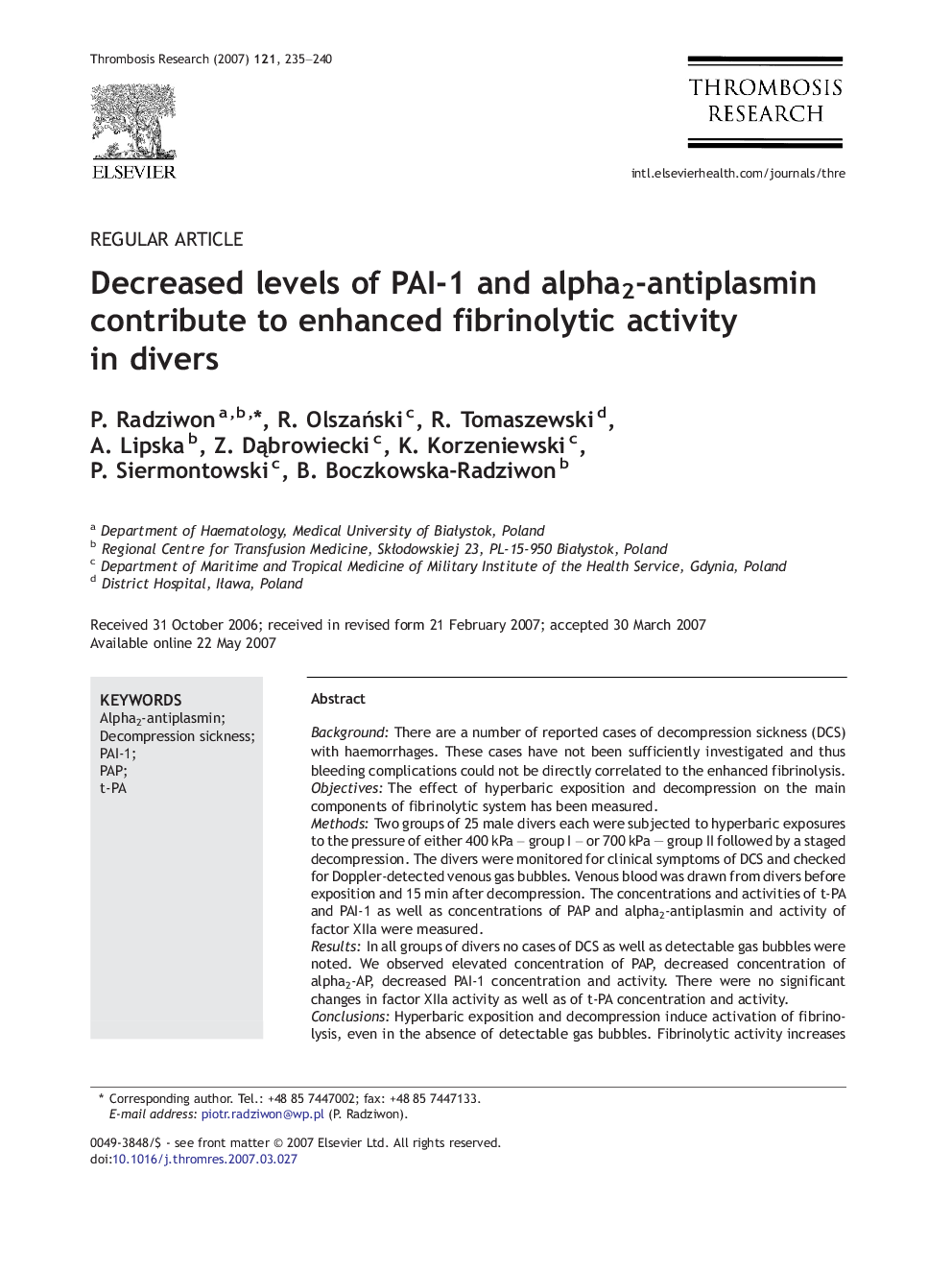| Article ID | Journal | Published Year | Pages | File Type |
|---|---|---|---|---|
| 3029901 | Thrombosis Research | 2007 | 6 Pages |
BackgroundThere are a number of reported cases of decompression sickness (DCS) with haemorrhages. These cases have not been sufficiently investigated and thus bleeding complications could not be directly correlated to the enhanced fibrinolysis.ObjectivesThe effect of hyperbaric exposition and decompression on the main components of fibrinolytic system has been measured.MethodsTwo groups of 25 male divers each were subjected to hyperbaric exposures to the pressure of either 400 kPa – group I – or 700 kPa — group II followed by a staged decompression. The divers were monitored for clinical symptoms of DCS and checked for Doppler-detected venous gas bubbles. Venous blood was drawn from divers before exposition and 15 min after decompression. The concentrations and activities of t-PA and PAI-1 as well as concentrations of PAP and alpha2-antiplasmin and activity of factor XIIa were measured.ResultsIn all groups of divers no cases of DCS as well as detectable gas bubbles were noted. We observed elevated concentration of PAP, decreased concentration of alpha2-AP, decreased PAI-1 concentration and activity. There were no significant changes in factor XIIa activity as well as of t-PA concentration and activity.ConclusionsHyperbaric exposition and decompression induce activation of fibrinolysis, even in the absence of detectable gas bubbles. Fibrinolytic activity increases mainly due to decrease of PAI-1 concentration and activity. Further clinical trials are necessary for the estimation of the importance of activation of fibrinolysis with decreased level of PAI-1 and alpha2-AP as a possible risk factor for bleeding in divers.
